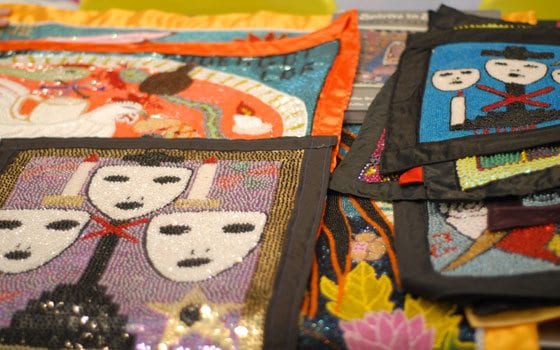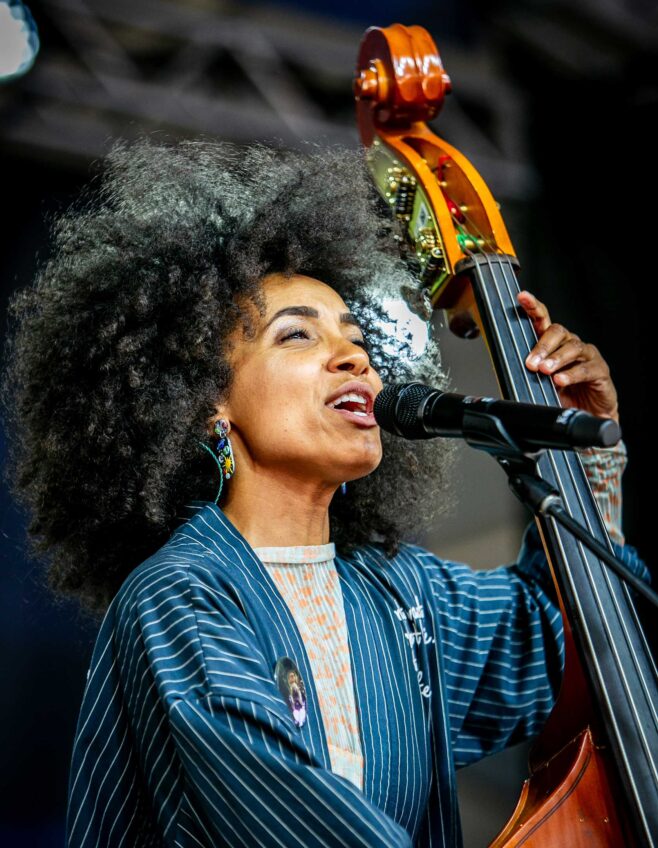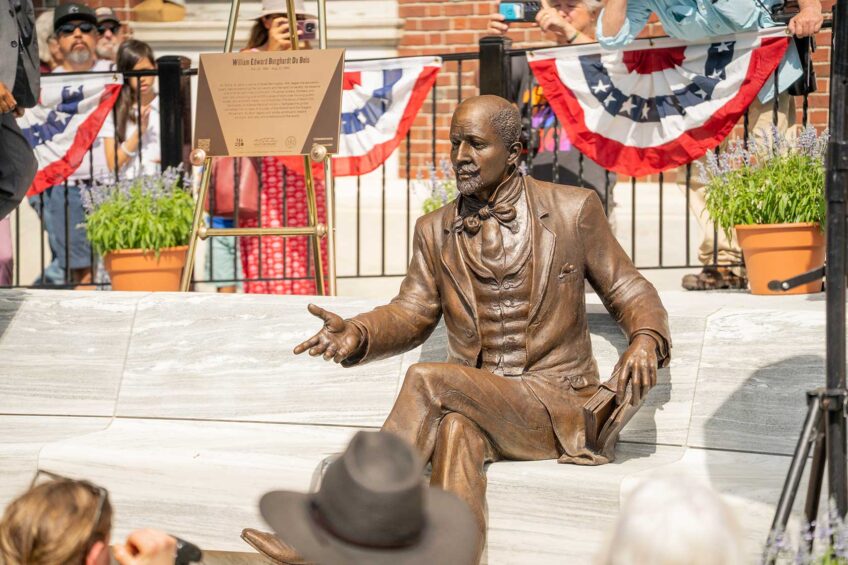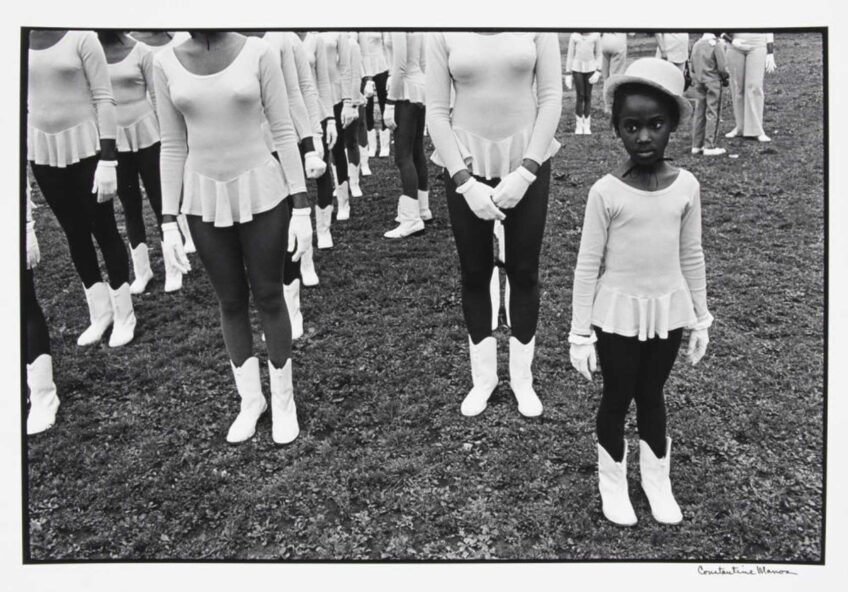
Daniela Caride
Mermaids and Catholic saints. Pyramids, hearts and ceremonial candles. Not exactly the dark, frightening, black-magic-worshipping imagery one might conjure up when thinking of Voodoo (spelled “Vodou” or “Voudou” in other parts of the world).
But these dazzling images — combining a variety of spiritual and ritualistic symbols from Haitian folk art, made of beads and sequins and sewn into cloth by local artists — adorn the Haitian Voodoo flags that will be on display at the opening of the new gallery Bead + Fiber this weekend.
Opening this Saturday, Oct. 18, and running through Nov. 7, “VOUDOU-Flags of Haiti” is the first exhibition for the Harrison Avenue space. Artist Andrea Garr decided to open Bead + Fiber to combine a fine art craft gallery with a retail store, her own studio and a place where people could learn different arts and crafts.
“I was interested in retail and in supporting other artists,” said Garr.
Haitian Voodoo flags are “extraordinarily beautiful,” said artist Nancy Josephson during her lecture about Voodoo flags at Bead + Fiber’s preview day last week. Josephson is the author of the book “Spirits In Sequins: Vodou Flags of Haiti,” and has almost 100 of the flags in her collection.
“VOUDOU-Flags of Haiti” features the work of Haitian folk artists like Yves Telemaque and Silva Joseph. Works like the beaded flags are helping folk art traditions in Haiti rise to the level of fine art, their artistic vibrancy gaining popular recognition even as they raise awareness of their nation’s extreme poverty.
The flags are also popularizing a religion that has had a negative reputation in America for centuries.
“The cool thing about Voodoo is that you can bring who you are to the whole picnic,” said Josephson, who lives and has her art studio in Wilmington, Del. “It’s not that you have to believe this [certain] way.”
The openness of the tradition, Josephson explained, is part of the reason she finds inspiration in the flags.
“Voudou is … like, ‘Well, if that spirit there, if that god there is strong, come on,’” she said. “… We need strength. Everybody is welcome.”
Josephson visited Haiti for the first time 13 years ago, interested in complementing her own artwork by interacting with Haitian folk artists also working with beads and sequins.
“I was supposed to be doing something, [but] I didn’t know what it was,” said Josephson about her previous art pieces.
She found exactly what she was looking for in the slums of Port-au-Prince, the capital of Haiti.
“I met a lot of artists immediately,” she said. “Most of the artists that I met were also spiritual people.”
She started working with folk artist Silva Joseph after her first visit to his Voodoo temple.
“That was my home,” said Josephson, who has traveled to Haiti three times a year since her first trip and has developed close relationships with people there.
As Josephson explained, the contemporary flags being made by artists like Joseph and Telemaque are different from the traditional, ceremonial versions.
The historical ones are much more sparsely decorated, she said, because they cannot be that heavily beaded if they are to be used in ceremonies — they have to unfurl in an elegant way. The newer style can feature more, and more intricate designs and beadwork.
Haitian artists make more flags in February, before Carnival, preparing to sell to coming tourists during the festivities.
It could take a week to finish one flag, according to Josephson, but she said it typically depends on how much help each artist can get to finish the work. Sometimes several family members bead the flags with the artist during the height of the season.
The end results are often breathtaking.
The flags “blew me [away] the first time I saw them,” said Garr.
“VOUDOU-Flags of Haiti” opens Saturday, Oct. 18, and runs through Nov. 7 at Bead + Fiber, located at 460 Harrison Avenue. Garr is also seeking more New England bead and fiber artists to display their work at her gallery.
For more information, visit www.beadandfiber.net.






